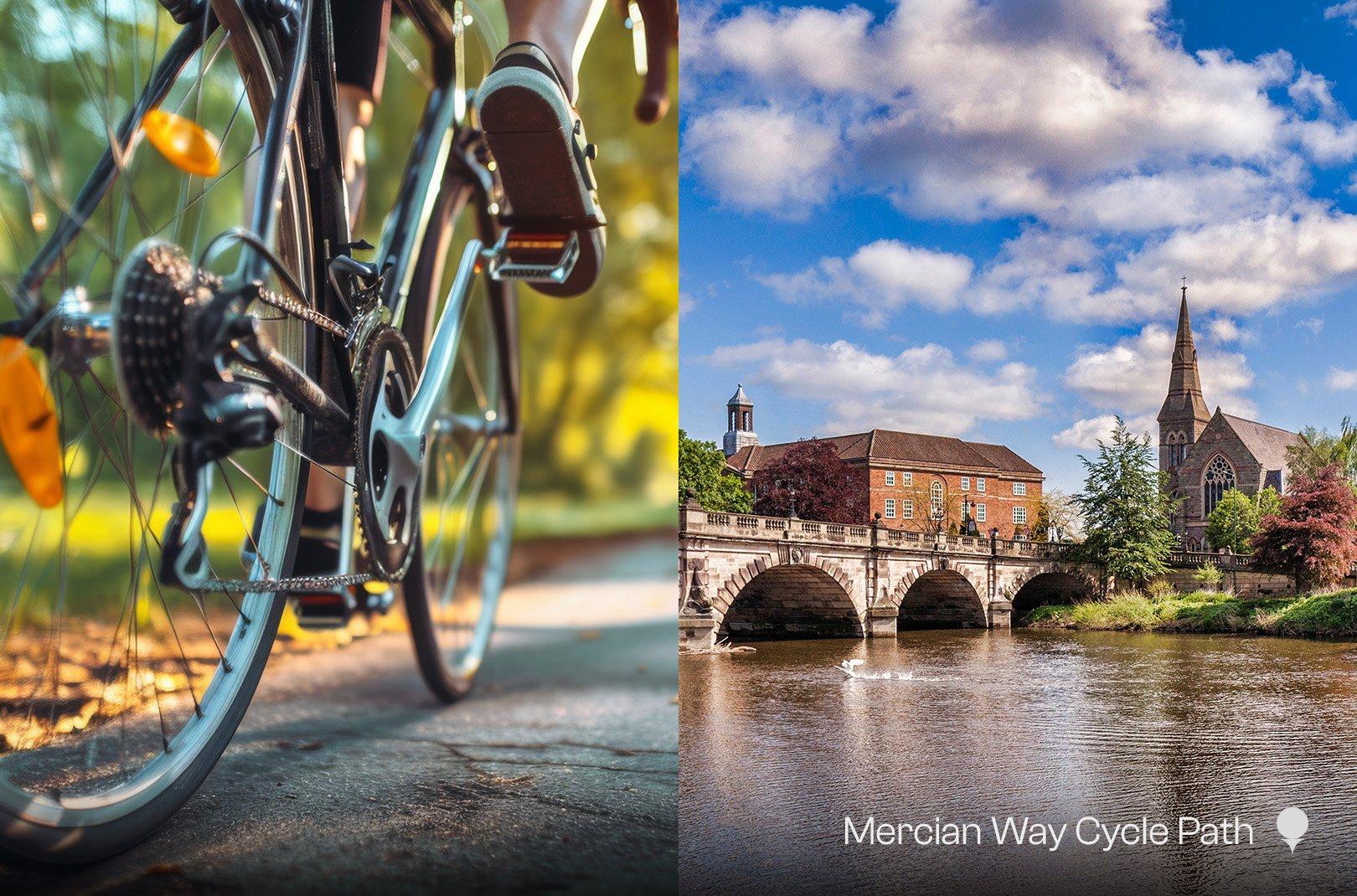The people we call the Anglo-Saxons were the inhabitants of England during the period known as the Dark Ages. Coming mainly from three large Germanic tribes, the Angles, the Saxons and the Jutes, it’s often said that little is known about these bejewelled warrior poets. Compared to the Romans before them and Normans who would barge in afterwards, the Saxons are a bit of a mysterious lot.
Though much of what they did can often get garbled in history books, the things they left behind have formed the basis of the UK as we know it. They played a huge part in the creation of the English language, the naming of towns and cities and systems of governing which are still in use today. They really did make the bones of Britain. So, if you’re looking to get outdoors to learn about some exciting Dark Age history, we’ve found some top outdoor sites to explore with the whole family.
Sutton Hoo Estate, Suffolk
The name Sutton Hoo will always pop up when talking about Saxon history, and for good reason. In 1939 Archaeologist Basil Brown excavated a burial mound on the grounds of the picturesque estate, hoping to shed some light on who the dark age people of Britain were. What they found exceeded everyone's expectations, and then some!
Buried under the mound was the ship burial of a Saxon king from the 7th century AD. The grave was a literal treasure trove of artefacts. What shocked Basil and his team the most was that before that day in 1939, no one had any idea the Saxons were capable of craftsmanship like that seen on the finds! Among them were bowls and vessels for feasting, silverware from the Mediterranean, fine textiles, solid gold outfit adornments intricately worked and inlaid with garnets from South Asia. Most notable of the finds was the helmet that would go on to become an iconic symbol of Britain’s Saxon age. Since then more and more treasures and burials have been unearthed on the estate, rewriting the history books and earning Sutton Hoo the title of Britain’s Valley of the Kings.
Today the Sutton Hoo estate is a great choice for family walks with multiple trails to walk on the 245-acre estate. You can choose routes taking you through different woodlands along the river or to the famous Tranmer House, with its indoor discovery room and outdoor adventure play area for kids. At the royal burial grounds, you can scale the 17-metre viewing town to get a better view of its famous mounds.
Outdoor events for kids are plenty, with things like bird watching, storytelling walks, photography workshops and more. Sutton Hoo is even great for the dogs too, as your four-legged friends are allowed all over the estate on a lead. They’re even welcome in the café and shop. No trip to Sutton Hoo would be complete without a visit to the High Hall exhibition to view the treasures from the graves that made the estate famous. Here they have a permanent exhibit with a variety of guest exhibits too.
https://www.nationaltrust.org.uk/visit/suffolk/sutton-hoo/family-activities-at-sutton-hoo
Offa’s Dyke, Wales & Shropshire
During the 8th century AD, the Welsh kingdoms were causing a fair amount of trouble for the Saxons of Mercia. The king of the Mercians, King Offa, took a leaf out of the Roman's book and built a boundary wall to help keep their troublesome neighbours at bay. This gigantic earthwork is known as Offa’s Dyke and it still spans approximately 177 miles (285 kilometres) Consisting of a ditch and an embankment, High on the Saxon side and with a deep ditch on the Welsh side. All finished with a wooden walkway atop the bank, later replaced by stone in parts. This created an easily defendable border along the western edge of the kingdom of Mercia, Offa built it to last, and it did!
Today, the dyke can still be seen snaking across the landscape. Clusters of trees cover some parts, other parts give way to modern roads however, Offa’s Dyke for the most part is still a complete and visible echo of a 1,300-year-old feud. Following the path of this Saxon security feature really is a fantastic way to enjoy the area. This long-distance footpath offers a chance to explore the breathtaking landscapes along the border between Wales and England. Crossing in and out of Wales over 20 times It takes you on a journey of diverse terrains, from the rolling hills of Shropshire and its historic towns to the rugged mountainous terrain of the Clwydian Range in North Wales.
Whatever type of walk you’re after, just pick a suitable section for your adventure and connect with nature and history while enjoying the stunning views. It’s not just Saxon history you’ll be walking through with this site. The winding ruin takes you near other sites such as Norman castles and Iron Age hillforts.
The Offa’s Dyke visitors centre is in Knighton, Shropshire, and sits at the midway point of the structure. It’s the best place to learn more about the history, purchase a map or park your car while you venture off on a history-infused family dog walk!
https://www.nationaltrail.co.uk/en_GB/trails/offas-dyke-path/
The Mercian Way Cycle Path
Staying in the Kingdom of Mercia but this time on two wheels, we have the Mercian Way. Also known as Cycle Route 54, this long-distance cycle path (271 miles) runs through the entire length of the Midlands from Chester, heading south, all the way to Wiltshire. The Mercian Way takes you through historic towns like Bridgnorth, Shrewsbury and Ironbridge to name a few. Along with other towns bursting with history, before meeting the ancient Salisbury plains in the south.
You'll cycle a variety of terrains along the way, from old Saxon market towns to picturesque countryside, ancient woodland, riverbanks, bridges and more, making for an exciting ride that never gets boring. And remember, if you’re after a shorter ride, you can pick the stretch you like the look of and set your own finish line. The trail is easy to keep to as it’s punctuated with cast Iron Saxon warrior route markers, holding shields and wearing the iconic Sutton Hoo Helmet!
Cycling along the Mercian Way is a fun and scenic way to explore the Midlands and breathe in some fresh air while solo or with the family. To make the most of your journey, it's a good idea to plan your route in advance, check for any updates or changes, and make sure you have all the necessary equipment and safety gear. If you're planning on completing the whole route, you might also want to consider overnight accommodations or camping stops along the way. So, gear up and get ready for a historic cycling adventure!
https://cycle.travel/route/mercian_way
West Stow, Suffolk
This one really makes history come alive; West Stow Anglo-Saxon Village is an archaeological site located in unspoilt Suffolk countryside. It first came to the attention of archaeologists when a Saxon graveyard was unearthed by mistake in 1849. Further excavations between 1956 and 1972 revealed West Stow was the site of an entire Anglo-Saxon settlement, consisting of seven large buildings that were likely halls. two large animal pens and other smaller buildings and storage huts. Preserved in the clay-rich local ground this Dark Age village has given historians great insight into how the Saxons built their settlements and planned their towns.
Fast forward to today and Dark Age West Stow has been fully resurrected with a reconstructed village that represents what it would have looked like back in Saxon England. The site is designed to give visitors a glimpse into the daily life and culture of the time. All buildings in the village, such as houses, workshops, and a communal hall built using traditional Anglo-Saxon construction techniques, making it an exciting and engaging living museum for visitors of all ages. You can explore and learn about various aspects of Anglo-Saxon life, including farming, craftsmanship, and domestic activities.
The museum is situated in a 125-acre country park with plenty of trails to try before or after the museum. Dogs are welcome in the café and country park. Assistance dogs are also allowed into the visitor centre, museum and Village.
Saxon Shore Way, Rye to Hastings
What better place to finish our list of Saxon sites than at Hastings? The Saxon Shore Way (approx. (160 miles) is covered in the signs of the South Coast’s prior defensive roles. From the Martello towers of the Napoleonic War to Second World War pillboxes, Norman-built towers and even a retired Russian submarine, this trail has something for every historical interest. However, the Saxon Shore Way takes its name from the buildings that came long before all these, the defensive forts the Romans built to keep the very first Saxons out of Britain, though some historians believe these anti-Saxon defence towers were just fortified ports.
Whatever they were used for, the name stuck even with the Saxon Shore boasting much more than just Anglo-Saxon history. The part of the trail leading from Rye to Hastings (13 miles) takes you past Henry VIII Camber Castle down canals and onto a picturesque coastal path that offers brilliant sea views and quiet beaches to take a break on! You’ll pass through the small village of Fairlight before a stroll through Hasting Country Park and its bronze-age hillfort, finally ending at Hastings Castle and the town itself, with museums and galleries around every corner and plenty more Saxon history to absorb. Just up the road is the town of Battle and its abbey, said to be the site of the battle of 1066 where Harold Godwinson, the last Saxon king was slain in battle marking the end of the Saxon period and the beginning of the Norman age!






